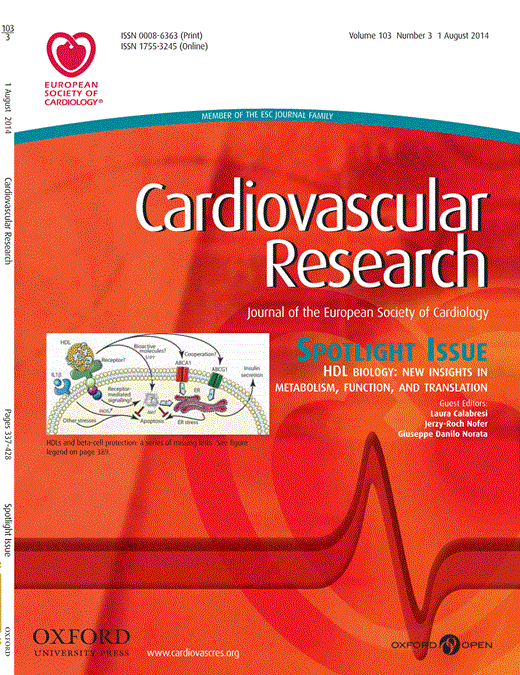-
PDF
- Split View
-
Views
-
Cite
Cite
T Casar Tena, T Blaette, M Philipp, 6
The DNA helicase Mcm2 is required for cardiac looping, Cardiovascular Research, Volume 103, Issue suppl_1, 15 July 2014, Page S1, https://doi.org/10.1093/cvr/cvu074.2Close - Share Icon Share
Abstract
Purpose: The morphology and positioning of the heart greatly depends on the establishment of a left-right axis early during embryogenesis. A failure in symmetry breaking may result in heterotaxy, a condition with seemingly random arrangement of inner organs. Some of the most serious complications in these patients are severe congenital heart defects. We have used a systems biology approach to identify new factors guiding asymmetry development and with such proper cardiogenesis.
Methods: We have applied phosphorylation-sensitive mass spectrometry to a zebrafish model of left-right asymmetry development. With this approach we identified minichromosome maintenance protein 2 (Mcm2) as a potential regulator of early heart development. Mcm2 is expressed in all dividing cells and was described as the unwinding helicase during DNA replication. Using an antisense morpholino oligonucleotides (MO)-based knockdown approach we have studied the impact of Mcm2 on laterality and heart development in zebrafish.
Results: MO-mediated knockdown of Mcm2 produced randomization of cardiac looping as well as pancreas localization indicating a role of Mcm2 in asymmetry development. This hypothesis was strengthened by the aberrant expression of southpaw, a nodal related gene. Southpaw is normally expressed in the left lateral plate mesoderm. Mcm2 morphants, however, displayed randomization of this lateralization gene. Furthermore, we found that Mcm2 is expressed and functions in the organ of laterality, where it appears to regulate cilia formation.
Conclusions: We have identified Mcm2 as a novel modulator of left-right asymmetry development.



